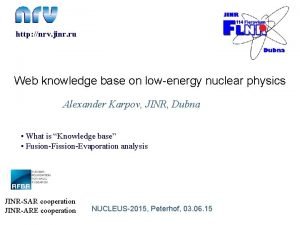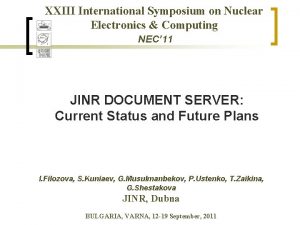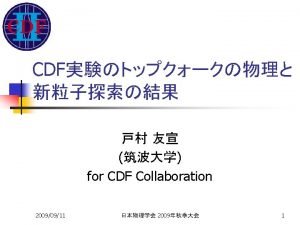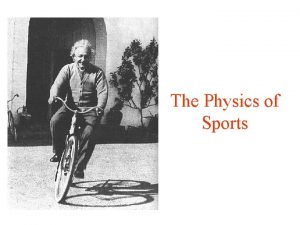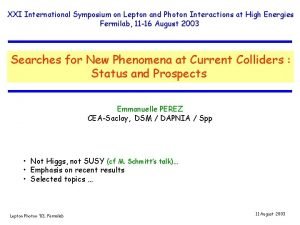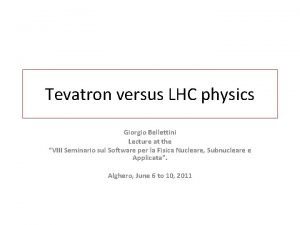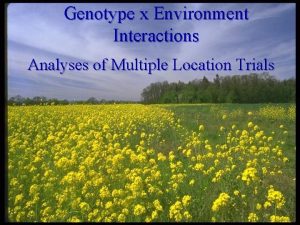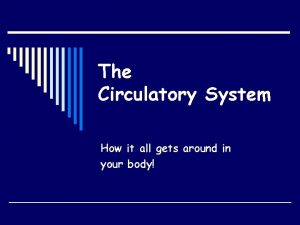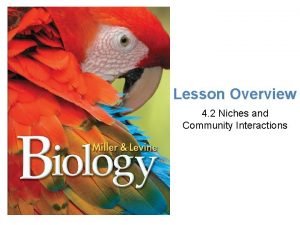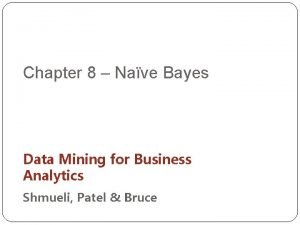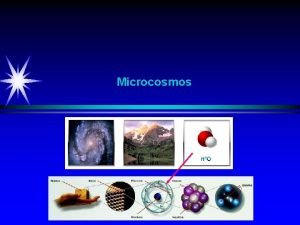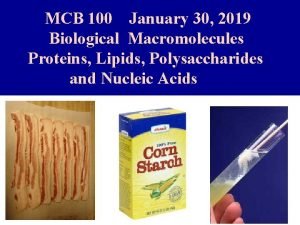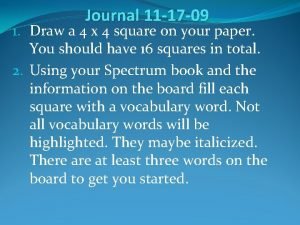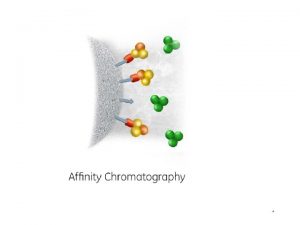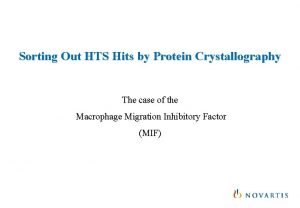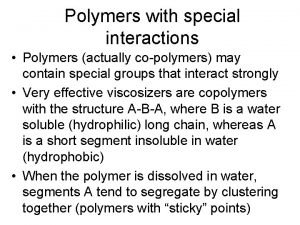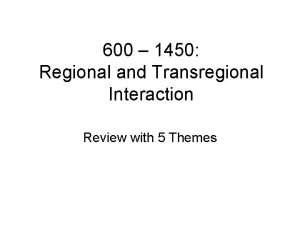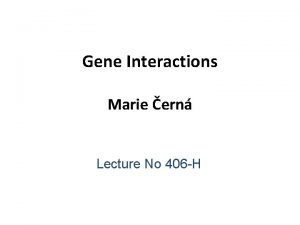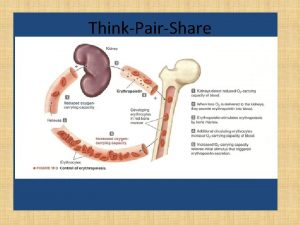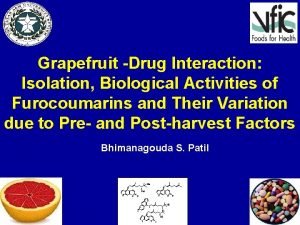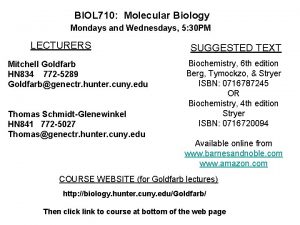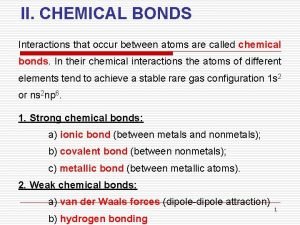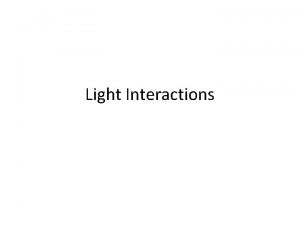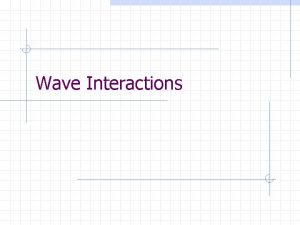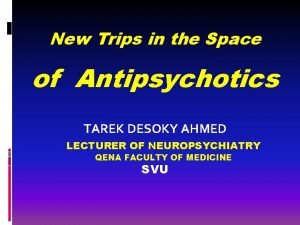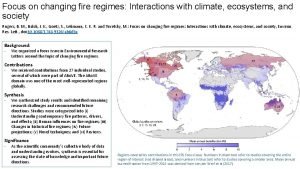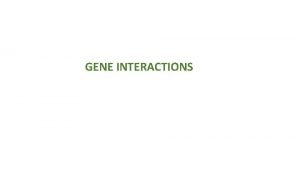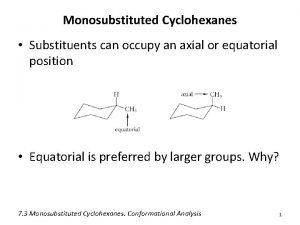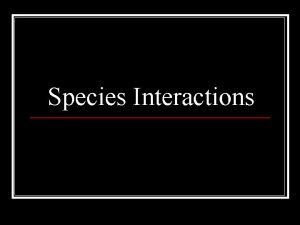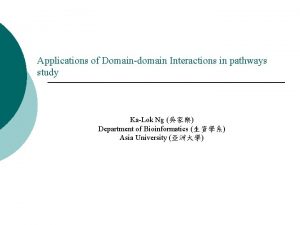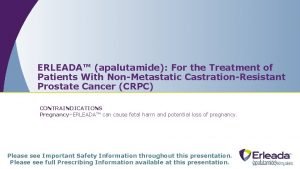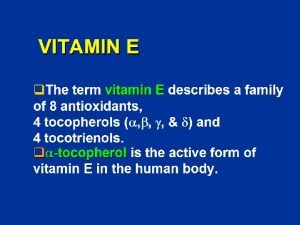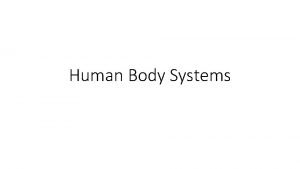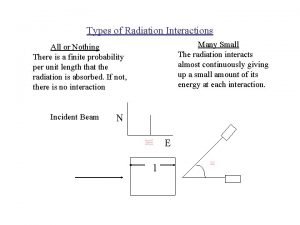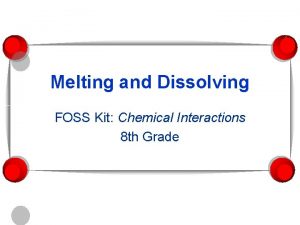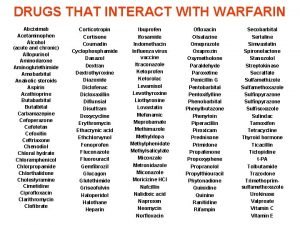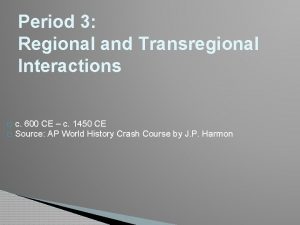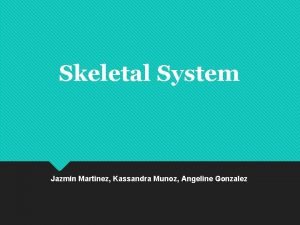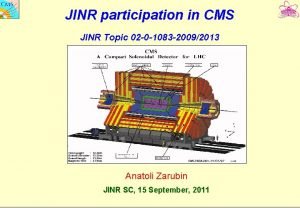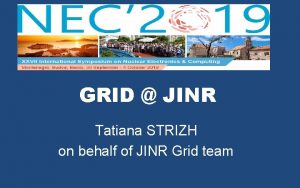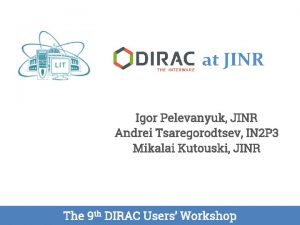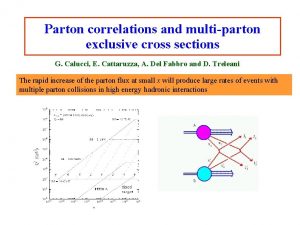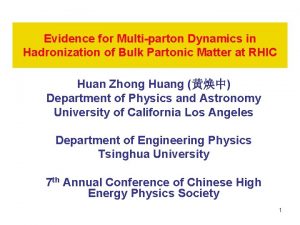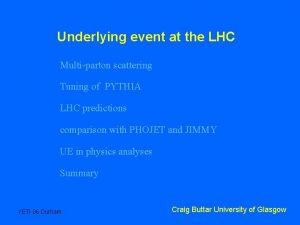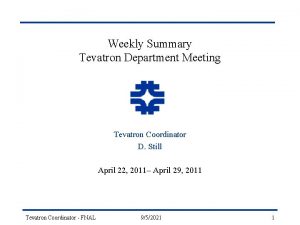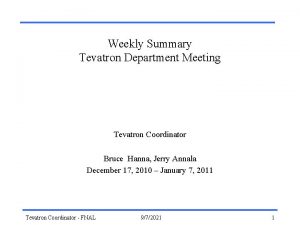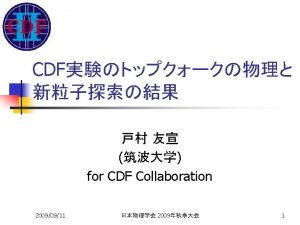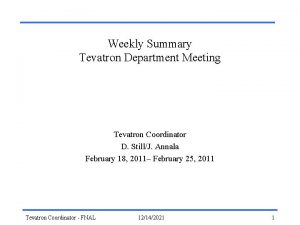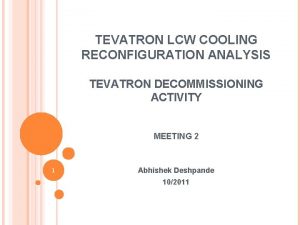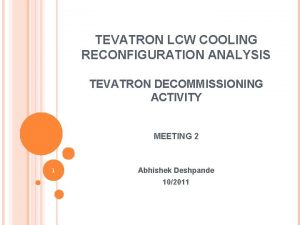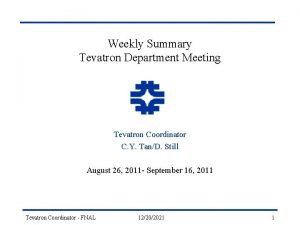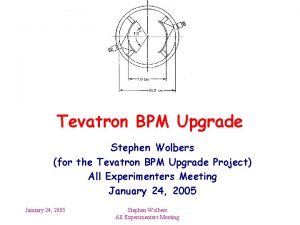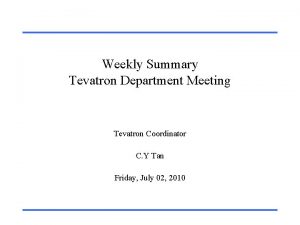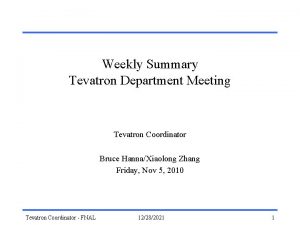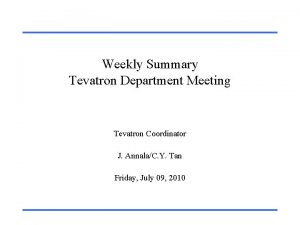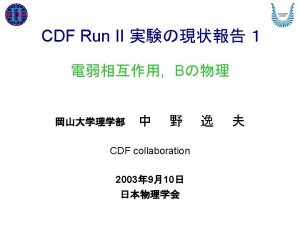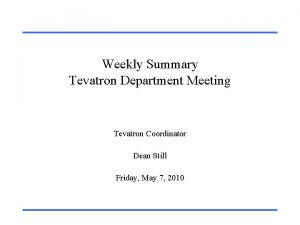Tevatron results on MultiParton Interactions N Skachkov JINR



![In the first 3 experiments [AFS, UA 2, CDF(1993)] the events with 4 jets In the first 3 experiments [AFS, UA 2, CDF(1993)] the events with 4 jets](https://slidetodoc.com/presentation_image/46f9b646f10c7df9d4137578760e07f1/image-4.jpg)
![[11] D 0 Collab. , V. M. Abazov et al. , accepted by Phys. [11] D 0 Collab. , V. M. Abazov et al. , accepted by Phys.](https://slidetodoc.com/presentation_image/46f9b646f10c7df9d4137578760e07f1/image-5.jpg)

![[33] I. M. Dremin and V. A. Nechitailo, “Independent pair parton interactions model of [33] I. M. Dremin and V. A. Nechitailo, “Independent pair parton interactions model of](https://slidetodoc.com/presentation_image/46f9b646f10c7df9d4137578760e07f1/image-7.jpg)


















![Differential Cross sections of photon+2(3) jets events D 0 ar. Xiv: 1101. 1509 [hep-ex], Differential Cross sections of photon+2(3) jets events D 0 ar. Xiv: 1101. 1509 [hep-ex],](https://slidetodoc.com/presentation_image/46f9b646f10c7df9d4137578760e07f1/image-26.jpg)
![Differential Cross sections of photon+3(2) jets events D 0 ar. Xiv: 1101. 1509 [hep-ex], Differential Cross sections of photon+3(2) jets events D 0 ar. Xiv: 1101. 1509 [hep-ex],](https://slidetodoc.com/presentation_image/46f9b646f10c7df9d4137578760e07f1/image-27.jpg)






























![Differential Cross sections of photon+3(2) jets events D 0 ar. Xiv: 1101. 1509 [hep-ex], Differential Cross sections of photon+3(2) jets events D 0 ar. Xiv: 1101. 1509 [hep-ex],](https://slidetodoc.com/presentation_image/46f9b646f10c7df9d4137578760e07f1/image-58.jpg)








- Slides: 66

Tevatron results on Multi-Parton Interactions N. Skachkov (JINR, Dubna) On behalf of the DØ and CDF Collaborations

Double Parton. Scattering 2

Double Parton Scattering. for Higgs as the background Signal DP background 3
![In the first 3 experiments AFS UA 2 CDF1993 the events with 4 jets In the first 3 experiments [AFS, UA 2, CDF(1993)] the events with 4 jets](https://slidetodoc.com/presentation_image/46f9b646f10c7df9d4137578760e07f1/image-4.jpg)
In the first 3 experiments [AFS, UA 2, CDF(1993)] the events with 4 jets in the final state were considered. In the CDF(1997) “γ” = γ/π⁰ , and 5 ≤ p. T^jet ≤ 7 Ge. V (misprint in the Table)
![11 D 0 Collab V M Abazov et al accepted by Phys [11] D 0 Collab. , V. M. Abazov et al. , accepted by Phys.](https://slidetodoc.com/presentation_image/46f9b646f10c7df9d4137578760e07f1/image-5.jpg)
[11] D 0 Collab. , V. M. Abazov et al. , accepted by Phys. Rev. D, . . . (2011); published yesterday as “on-line” , ar. Xiv : 1101. 1509 [hep-ex] (2011);

![33 I M Dremin and V A Nechitailo Independent pair parton interactions model of [33] I. M. Dremin and V. A. Nechitailo, “Independent pair parton interactions model of](https://slidetodoc.com/presentation_image/46f9b646f10c7df9d4137578760e07f1/image-7.jpg)
[33] I. M. Dremin and V. A. Nechitailo, “Independent pair parton interactions model of hadron interactions. ” Phys. Rev. D 70 (2004) 034005; ar. Xiv : hep-ph/ 0402286 ; For new application of DP see: E. L. Berger, C. B. Jackson and G. Shaughnessy, Phys. Rev. D 81 (2010) 014014, ar. Xiv: 0911. 5348 [ hep-ph ] J. R. Gaunt and W. J. Stirling, JHEP 1003: 005 (2010) , ar. Xiv: 0910. 4347; D. Bandurin, G. Golovanov, N. S. , ar. Xiv: 1011. 2186 [ hep-ph ]

Phys. Rev. D, 81, 052012 (2010)

Classical CDF Phys. Rev. D 56(1997)3811 as a new approach for DP measurements 1. Substitution of one jet by one γ/π⁰ gives one order of magnitude improvement in the ratio of DP/SP. 2. New technique for extracting σ_{eff} is independent of theoretical input and its uncertainties. It is named as “two-data-set” technique. 3. To differentiate between the DP and SP processes in data six distinguishing variables are introduced. 4. CDF(97): σ_{eff} =14. 5± 1. 7+1. 7/-2. 3; f_DP=(52. 6 ± 2. 5)% We use the CDF (1997) methods

Double parton cross sections, D 0 4. In the CDF(1997) jets were not corrected for energy losses; D 0 used jets with calibrated energy. (JES calibration is important at high PT)


Inclusive Isolated Photon + Jet Phys. Rev. Lett. 102, 192002 (2009) investigate source for disagreement in data/theory incl. photon p. T shape: measure more differential: • tag photon and jet reconstruct full event kinematics • • measure in 4 regions of yg / yjet - photon: central - jet: central / forward - same side / opposite side L = 1 fb-1 different PDF sensitivity in different yg / yjet regions look at ratios for quantitative statement … p. Tg (Ge. V) 12

Inclusive Isolated Photon + Jet Difference between data and QCD predictions for cross sections (left) and their ratios (right) in 4 different rapidity (y) regions

D 0 used photons with calibrated energy

Inclusive isolated photon production

Inclusive Isolated Photon + Jet Difference between data and QCD predictions for cross sections (left) and their ratios (right) in 4 different rapidity (y) regions

photon+3 jets & photon+2 jets 3 observable configurations yielding a “photon + 3 jets” evnt I. γ +1 jet system over- II. γ +2 jet system (1 j=gl) overlaid III. jet from dijet sys- laid with dijet system with 1 jet from dijet system (1 lost) tem substitute 1 st jet


Double parton cross sections, CDF (1997) N_2 coll –number of beam crossings with 2 hard collisions N_1 coll –number of beam crossings with 1 hard collision


Double parton events selection, D 0 Calculated for the pair that gives the minimum value of S: 21

In SP events two radiated (gluons) jets emitted closer to the leading jet (recoiling against the photon directed in φ )


Double parton cross sections, D 0

Conclusion: D 0 measured (see Phys. Rev. Lett. 102, 192002 (2009) 1. The fraction of DP f_DP 2. The scale parameter σ_{eff} in 3 PT (2 -nd jet) intervals: 15< p. T <20 Ge. V, 20< p. T <25 Ge. V, 25< p. T <30 Ge. V )
![Differential Cross sections of photon23 jets events D 0 ar Xiv 1101 1509 hepex Differential Cross sections of photon+2(3) jets events D 0 ar. Xiv: 1101. 1509 [hep-ex],](https://slidetodoc.com/presentation_image/46f9b646f10c7df9d4137578760e07f1/image-26.jpg)
Differential Cross sections of photon+2(3) jets events D 0 ar. Xiv: 1101. 1509 [hep-ex], accepted by PRD The 3 -rd jet of DP dijet is either not reconstructed or below the p. T threshold in event selection CDF Phys. Rev. D 57(1998) 67
![Differential Cross sections of photon32 jets events D 0 ar Xiv 1101 1509 hepex Differential Cross sections of photon+3(2) jets events D 0 ar. Xiv: 1101. 1509 [hep-ex],](https://slidetodoc.com/presentation_image/46f9b646f10c7df9d4137578760e07f1/image-27.jpg)
Differential Cross sections of photon+3(2) jets events D 0 ar. Xiv: 1101. 1509 [hep-ex], accepted by Phys. Rev. D The Δφ cross section and then the DP fraction in the “ γ + 2 jet” events are measured in 3 bins : 15< p. T <20, 20< p. T <25 and 25< p. T <30 Ge. V. The ΔЅ cross section is measured in the “γ + 3 jet” events in a single interval 15 – 30 Ge. V.







P 0 –the default model in Perugia family, CTEQ 5 L PDF P_nocr – excludes color reconnections in final state. P_hard ISR/FSR effects in P 0 P-6, P-X based on CTEQ 6 L 1, MRST LO * PDFs -- Most preferable MPI models


Triple Parton Fractions, D 0


Summary: DP in gamma+ 2(3)jet events 1. The Δφ cross section and then the DP fraction in the “ γ + 2 jet” events are measured in 3 p. T (jet 2) bins : 15< p. T <20, 20< p. T <25 and 25< p. T <30 Ge. V. 2. The ΔЅ cross section is measured in the “γ + 3 jet” events in a single p. T (jet 2) interval 15 – 30 Ge. V. 3. The measurement in these intervals allows good sensitivity to the DP contribution and allows one to differentiate between various MPI models quite well. 4. Data favor new PYTHIA MPI models, Perugia tunes P 0, P-hard, P-nocr, P-6, P-X tunes, while old MPI models with tunes A and W, are disfavored.

Backup 39

. Photons test theory fixed order: NLO resummation PDFs 40

Direct Photon Production direct photons emerge unaltered from the hard subprocess direct probe of the hard scattering dynamics sensitivity to PDFs (gluon!) …but only if theory works also fragmentation contributions: (all quark/anti-quark subprocesses) suppress by isolation criterion observable: isolated photons 41

Inclusive Isolated Photons Phys. Lett. B, 639, 151 (2006), D 0 p. Tg (Ge. V) • • CDF and D 0 measurements: 20< p. T <400 Ge. V agreement data/theory: difference in low p. T shape experimental and theory uncertainties > PDF uncertainty no PDF sensitivity yet first: need to understand discrepancies in shape p. Tg (Ge. V) 42

In D 0 2006 publication on the prompt photons production the deviations from the corresponding p. QCD predictions, previously founded in Run. I data, are observed in a more wide kinematical region and with higher statistics. This result was confirmed by CDF measurement in 2009 (DIS 09, Madrid). D 0 (2006) ratio data / QCD_NLO Phys. Lett. B, 639, 151 (2006), D 0 CDF (2009) ratio data / QCD_NLO Phys. Lett. B, 639, 151 (2006), D 0


Isolated Photon + HF Jet Phys. Rev. Lett. 102, 192002 (2009) Photon + (b/c) jet + X Photon p. T : 30 -150 Ge. V 0. 01<x<0. 3 b, c, gluon PDF test gluon splitting contribution tag photon and jet Rapidities: triple differential 45

Isolated Photon + HF Jet photon+b: agreement over full p. T range: 30 -150 Ge. V no PDF sensitivity L = 1 fb-1 photon+c: - agree only at p. T<50 Ge. V - disagreement increases with photon p. T - using PDF including intrinsic charm (IC) improves theory p. T dependence p. Tg (Ge. V) 46

. Double Parton Scattering Signal DP background 47

Phys. Rev. D, 81, 052012 (2010)


Double parton cross sections, D 0

Double parton cross sections, D 0


photon+3 jets 3 observable configurations yielding a photon + 3 jets I. γ +1 jet system over- II. γ +2 jet system (1 j=gl) overlaid III. jet from dijet sys- laid with dijet system with 1 jet from dijet system (1 lost) tem substitute 1 st jet

Double parton cross sections, CDF (1997) Nc(2) –number of beam crossings with 2 hard collisions Nc(1) –number of beam crossings with 1 hard collision



photon+3 jets & photon+2 jets 2 observable configurations yielding a photon + 3 jets γ +1 jet system overlaid with dijet system γ +2 jet system overlaid with 1 jet from dijet system
![Differential Cross sections of photon32 jets events D 0 ar Xiv 1101 1509 hepex Differential Cross sections of photon+3(2) jets events D 0 ar. Xiv: 1101. 1509 [hep-ex],](https://slidetodoc.com/presentation_image/46f9b646f10c7df9d4137578760e07f1/image-58.jpg)
Differential Cross sections of photon+3(2) jets events D 0 ar. Xiv: 1101. 1509 [hep-ex], accepted by PRD γ +1 jet system overlaid with dijet system γ +2 jet system overlaid with 1 jet from dijet system 2 observable configurations yielding a photon + 3 jets






Summary: DP in gamma+ 3 jet events


Isolated Photon + Jet p. Tg (Ge. V) quark-gluon subprocess fraction in different rapidity regions versus p. T 66
 Nrv jinr
Nrv jinr Pin jinr
Pin jinr Tevatron cdf
Tevatron cdf Tevatron
Tevatron Superjets“ am tevatron
Superjets“ am tevatron Bellettini
Bellettini Interactions
Interactions Circulatory system interactions with other systems
Circulatory system interactions with other systems The properties and interactions of magnets
The properties and interactions of magnets Abiotic
Abiotic Insight therapies involve verbal interactions
Insight therapies involve verbal interactions Noncovalent interactions
Noncovalent interactions Niches and community interactions
Niches and community interactions Chapter 5 evolution and community ecology answer key
Chapter 5 evolution and community ecology answer key Chapter 22 reaching out cross-cultural interactions
Chapter 22 reaching out cross-cultural interactions Basic factors of communication
Basic factors of communication Naive bayes pays attention to complex interactions and
Naive bayes pays attention to complex interactions and Neutrinous
Neutrinous Niches biology
Niches biology Dna-protein interactions
Dna-protein interactions Wave interactions
Wave interactions Protein binding interactions
Protein binding interactions Qualities behaviors and complexities
Qualities behaviors and complexities Hccee
Hccee Special interactions
Special interactions Regional and transregional interactions
Regional and transregional interactions Reciprocal recessive epistasis
Reciprocal recessive epistasis What is product architecture
What is product architecture Organization of the lymphatic system
Organization of the lymphatic system Grapefruit-drug interactions chart
Grapefruit-drug interactions chart Sphere interactions examples
Sphere interactions examples Intramolecular interactions
Intramolecular interactions Congress formal and informal powers
Congress formal and informal powers Interactions between ais and internal and external parties
Interactions between ais and internal and external parties Symbiosis and species interactions keystone webquest
Symbiosis and species interactions keystone webquest Chapter 22 reaching out cross-cultural interactions
Chapter 22 reaching out cross-cultural interactions Interactions between atoms occur
Interactions between atoms occur Interactions among living things
Interactions among living things Ppi omeprazole
Ppi omeprazole Light interactions
Light interactions Wave interactions
Wave interactions Sertraline interactions
Sertraline interactions Nutrient interactions
Nutrient interactions Interactions
Interactions Metformin overdose
Metformin overdose Transversion
Transversion Axial substituents
Axial substituents 5 major types of species interactions
5 major types of species interactions Section 20-1 review species interactions
Section 20-1 review species interactions Protein binding interactions
Protein binding interactions Competition symbiotic relationship
Competition symbiotic relationship Chapter 14 interactions in ecosystems
Chapter 14 interactions in ecosystems Erleada mechanism of action
Erleada mechanism of action Circulatory system interactions with other systems
Circulatory system interactions with other systems Vitamin e main function
Vitamin e main function Nervous interactions with other systems
Nervous interactions with other systems Types of interactions
Types of interactions Monetary and fiscal policy interactions activity 5-5
Monetary and fiscal policy interactions activity 5-5 Interactions within ecosystems grade 7
Interactions within ecosystems grade 7 Wave interactions
Wave interactions Foss chemical interactions
Foss chemical interactions Sertaline
Sertaline Chapter 22 reaching out cross-cultural interactions
Chapter 22 reaching out cross-cultural interactions Ppi drug interactions
Ppi drug interactions Regional and transregional interactions
Regional and transregional interactions Plants called sundews have rounded green leaves
Plants called sundews have rounded green leaves Angeline gonzalez
Angeline gonzalez
